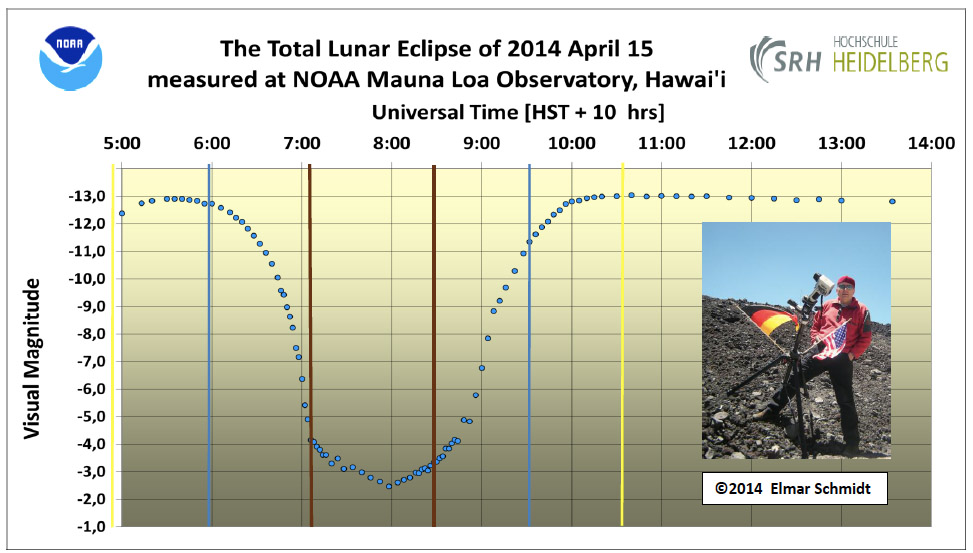August 3, 2024
How Dark Was the Eclipse?
Originally published April 17, 2014

image by Elmar Schmidt,Mauna Loa Observatory, Hawaii
The April 15th, 2014 total lunar eclipse was followed by Elmar Schmidt from SRH University of Applied Sciences, Heidelberg, Germany. On invitation by John Barnes of NOAA, he used a portable photometer at the facilities of the Mauna Loa Observatory (155°34’41"W, 19°32’20"N, altitude 3396 m). All plotted magnitudes are standardized to an air mass of 1.0 of a Rayleigh atmosphere. The eclipse was a relatively bright one, as the Moon’s magnitude during totality reached a base at - (2.5±0.1) mvis, implying a linear brightness reduction of about 16 000. The very first data points are affected by aerosol in front of the just risen Moon. Upcoming high clouds prevented three hours of planned data only after the eclipse. Otherwise the conditions were near-perfect. The colored vertical lines designate the six eclipse contact times. The shown light curve is preliminary because of a lateral bias of the measuring aperture, which was checked by additional optics, and will be corrected before publication.
Elmar Schmidt
Technical Details
The photometer was used courtesy of Christian Wersig, Bad Dürkheim, Germany. Frank Killich of Kiwitechnik, Göttingen, Germany, supported this work with optical components and helpful discussions. The hospitality in the observer’s "ground station" at the house of Mrs. R.K. Black in Hilo, HI, is gratefully acknowledged.
Related Links
Previous eclipse measurements: 2010 and the dark 2011 eclipse.
Yesterday's LPOD: Not a Blood Moon
Tomorrow's LPOD: Italian Masterpieces
COMMENTS?
Register, Log in, and join in the comments.



